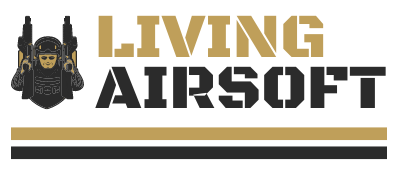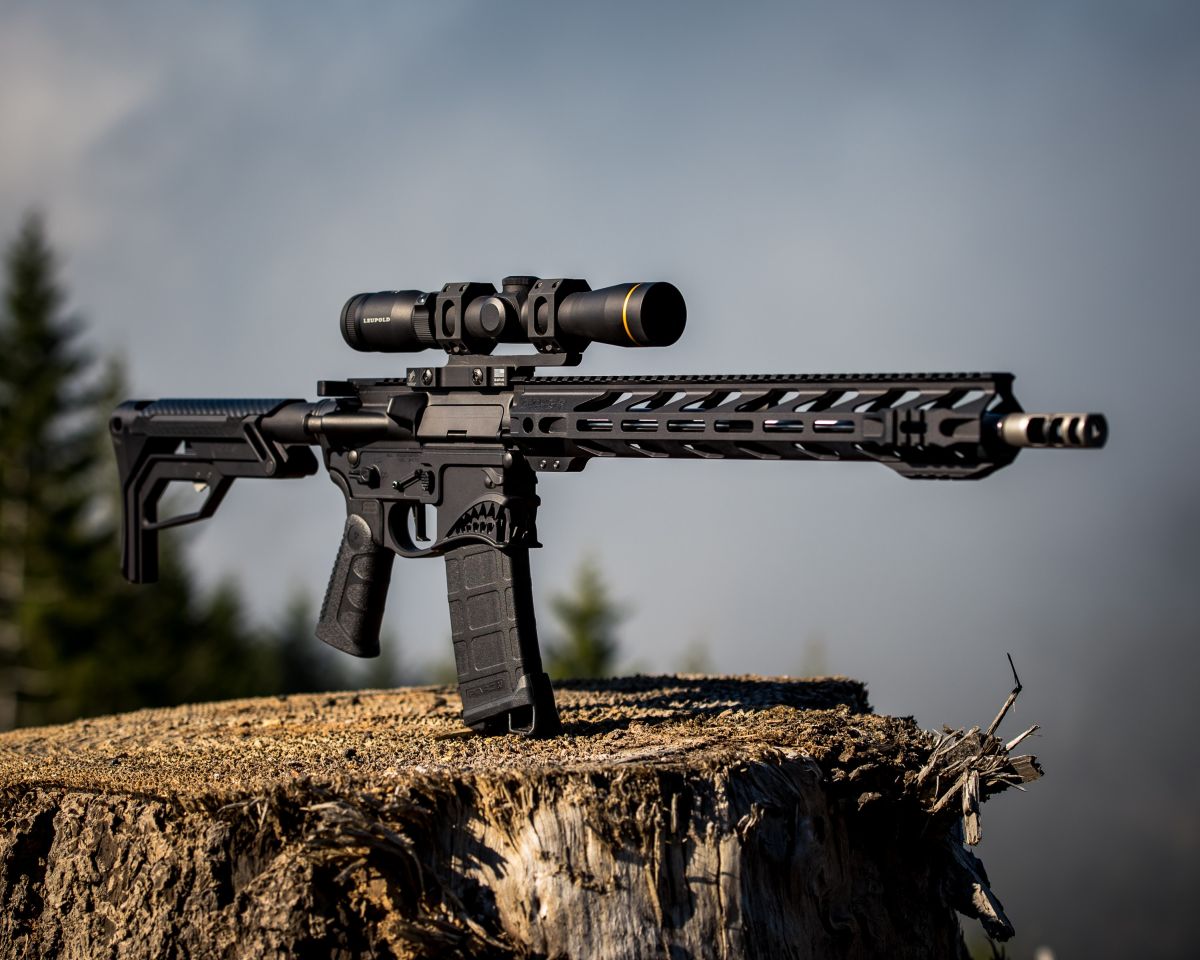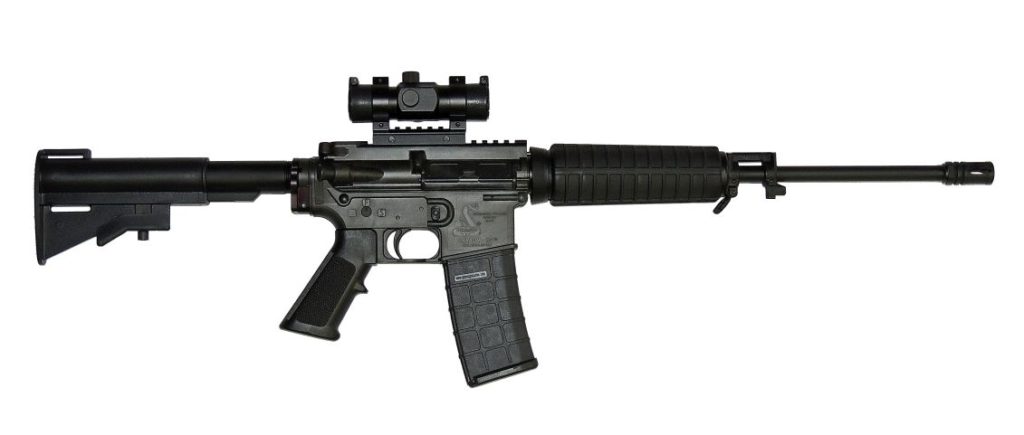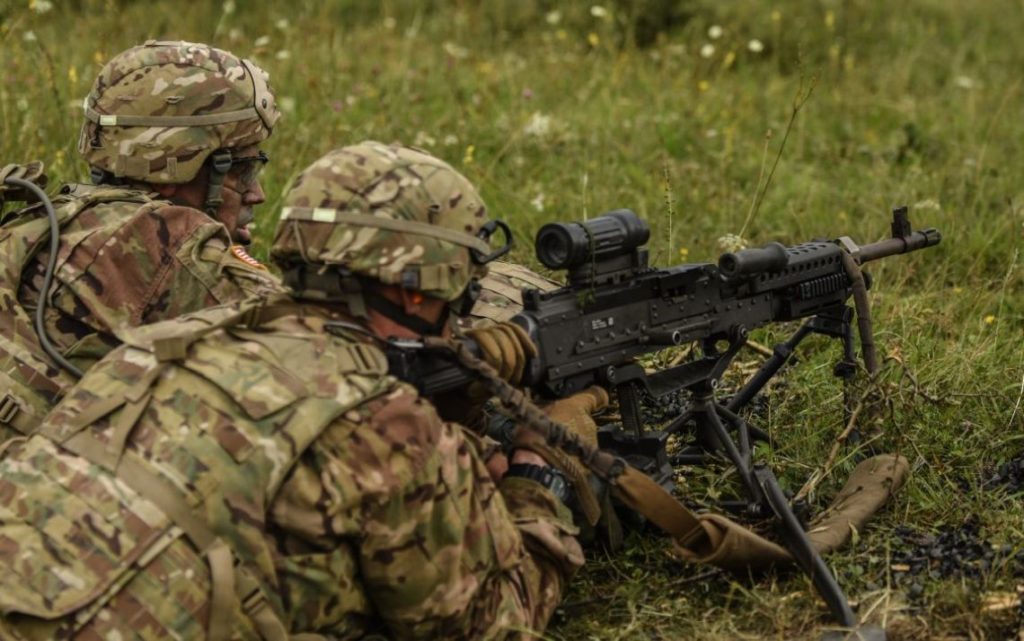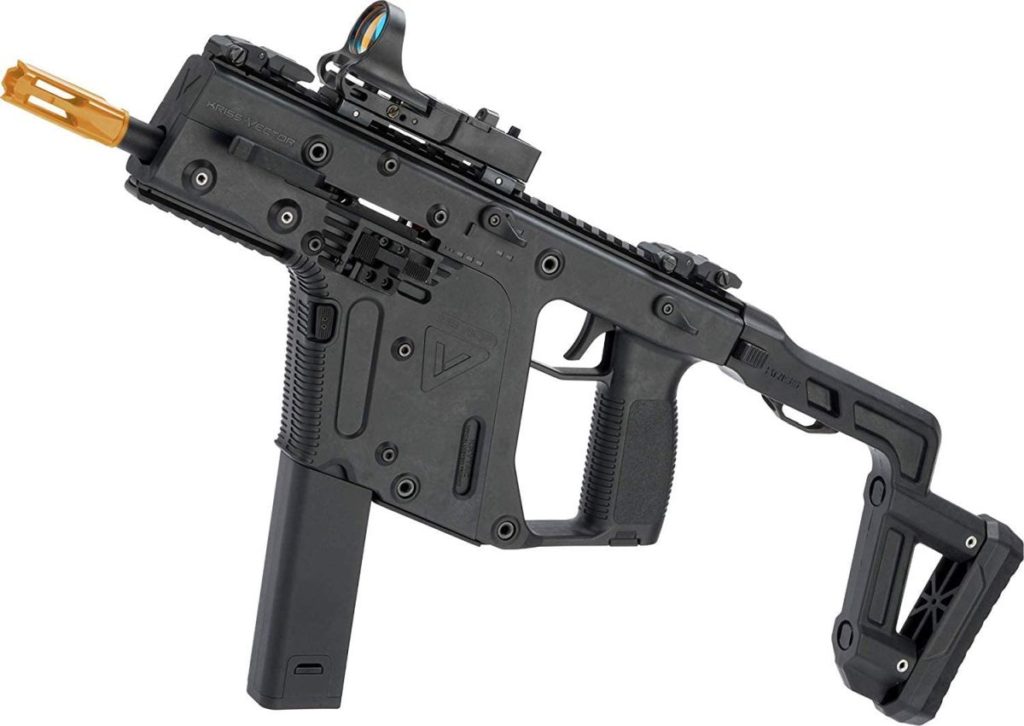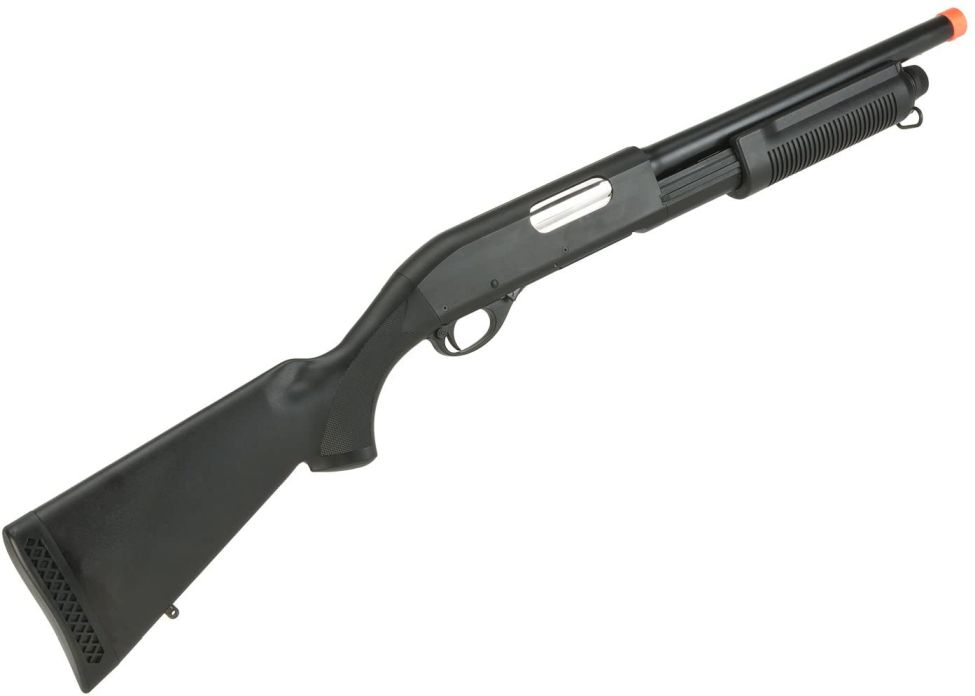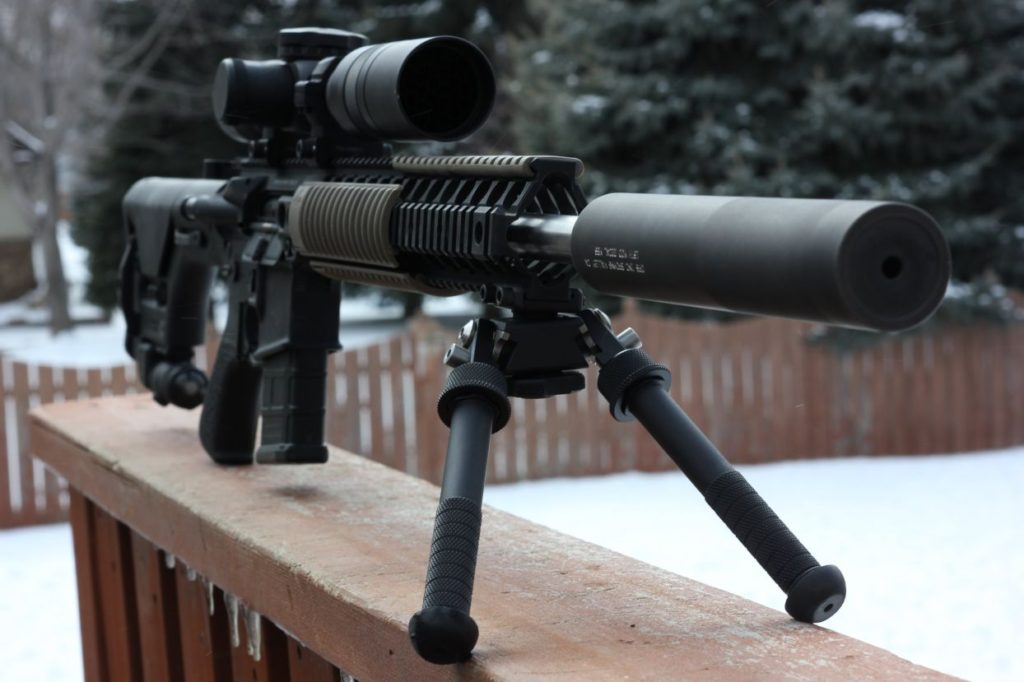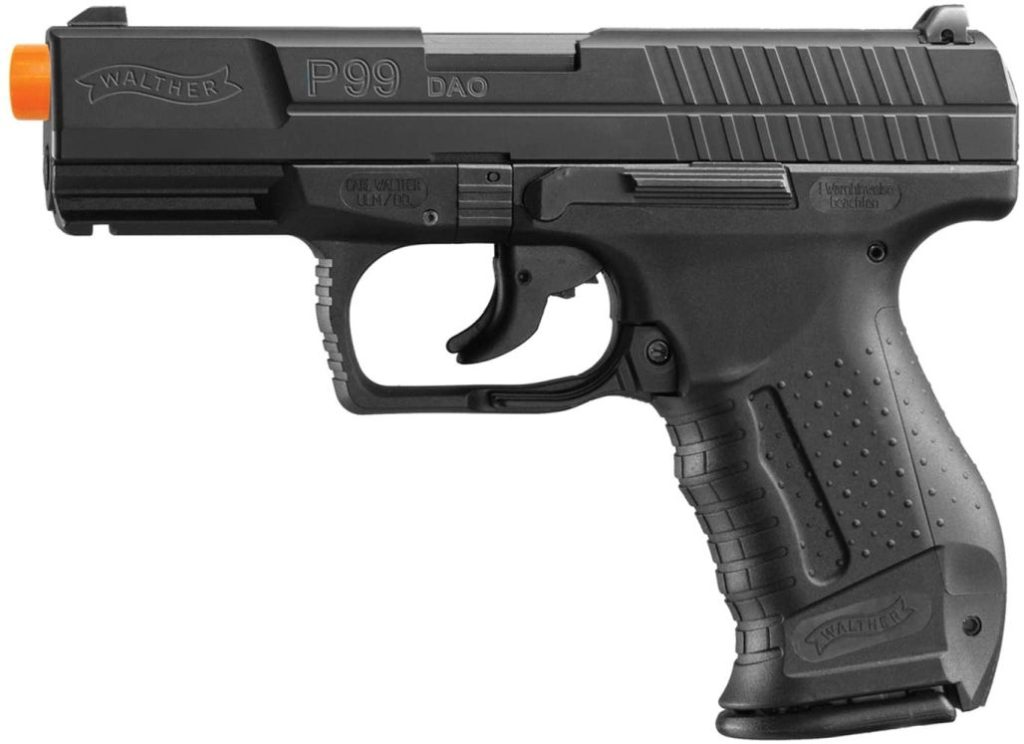Originating in Japan in the early 1970s, airsoft is a popular sport activity in which competing teams must eliminate opposing players using replica air weapons called airsoft guns. Airsoft guns were initially designed for shooting at targets, but as their plastic pellets can’t hurt or kill humans, airsoft became popular for casual wargames.
One of the first things to be carried out when approaching the discipline of airsoft is to choose the proper equipment. The main piece of the equipment is the airsoft gun, which is the primary offensive element of the player, and whose characteristics and level of maintenance required will determine the ability to continue operating effectively. In today’s article, we’re bringing you a guide to airsoft gun types and propulsion mechanisms so that you can easily decide what airsoft gun should you get.
Table of Contents
What Is Airsoft Gun?
First things first. If you’re a newcomer to the world of airsoft and you’re not sure what airsoft gun is and how does it work, let us help you. Airsoft guns are air-powered guns that shoot 6 or 8mm plastic round projectiles called BBs. While airsoft pellets can’t kill you or cause serious injuries (except if you don’t wear protective gear and get hit in the eye) they can cause a little pain if you don’t follow safety procedures and wear protective gear. But, this is the case with many activities so don’t worry – airsoft is pretty safe and even kids can play it.
However, although an airsoft gun is perceived as a toy gun by some, you should treat it as a real weapon at all times. Used for military simulations, recreational games, and so on, airsoft guns are mostly pretty realistic replicas of existing firearms replicating the look, weight, and feel of real guns. This is one more reason to be extra careful and not take your airsoft gun in the public as it is very hard to tell the difference between an airsoft gun and a real firearm which could cause you a lot of problems, especially with a law-enforcement officer. Also, an orange tip on the barrel is there for a reason so think twice before removing it.
There are a couple of different gun types and propulsion mechanisms and in the rest of the article we’ll explain each type and the differences between them to help you decide which type of airsoft gun you should get.
How to Choose Your First Airsoft Gun?
There are several parameters to be considered when choosing the airsoft gun, but we can say this are the main ones:
- Price
- Propulsion mechanism
- Gun type (or role you intend to play in Airsoft)
Among these parameters, price is certainly something that for the many constitutes the main discriminating factor for choosing between airsoft guns, at least when approaching the world of Airsoft for the first time. Mid-end quality airsoft guns can offer a satisfactory performance with an initial spend of around about $150. Spending $350-$500 allows the purchase of high performing, high-end rifles that will improve the experience thanks to some mechanisms that will increase the immersiveness of the game, such as the gauge and the beating mass that simulates the recoil. Finally, spending between $700 and $1,500, will grant you the access to the so-called PTW (Professional Training Weapon), which offer even more enhanced performance, although not too far from the one offered by some high-end airsoft guns. PTWs are designed for highly specific training needs, which justify the greater expense whilst they show a lack of significant performance improvements. PTWs are meant for professional training needs, like military and police. Having dealt with the trickiest problem, we proceed to analyze the purely tactical-operational aspects.
There are three different types of airsoft guns or propulsion mechanisms to be more precise – spring, electric, and gas. Each of them has its own strengths and weaknesses. Gas-powered guns use compressed gas to propel the BB out of the gun, spring-powered guns or “springers”, use a spring to push the BB and must be manually cocked before each shot, and electric guns or “AEG” are battery-powered Airsoft Guns which work very similarly to spring-powered guns but you don’t have to manually pull back the spring, as an electric motor, which is connected to the rechargeable battery, is used for this. We’ll talk in more detail about propulsion mechanisms a little later.
Based on the different characteristics of airsoft guns, we can distinguish six different gun types:
- Assault rifles
- Machine guns
- SMG (Submachine guns)
- Shotguns
- Sniper rifles
- Handgun (pistols and revolvers)
Airsoft Guns: Types Of Propulsion Mechanisms (The Difference Between an Electric, Gas, and Spring Airsoft Guns)
There are three basic types of airsoft propulsion mechanisms – spring, electric, and gas. Some require electrical components, some pressurized tanks, and others have a bolt handle to be pulled and released in order to charge the next round. In the electric and manually loaded airsoft guns, the spring will cause the air to be directed against the bullet, ejecting it, while in the gas-powered airsoft guns the gas released by a valve will provide the propulsion.
If you were wondering what’s better for airsoft, electric, spring, or gas-powered and which type of airsoft gun should you get, it actually depends. Each firing mechanism has its own strengths and weaknesses so it’s not an easy decision to choose between them. Let’s take a look at how each type works and learn the difference between an electric, gas, and spring airsoft guns.
Spring-powered Airsoft Guns (“Springers”)
Spring-powered airsoft guns, usually referred to as “springers”, use the power of a spring to push the BB down the barrel of the gun and must be manually cocked before each shot. Once the spring is pulled back or cocked, the BB is pushed into a chamber, and when you pull the trigger air forces BB out. Usually, this mechanism can be found on sniper rifles. The loading system is slower but grants a reduced amount of noise. In general, these are less efficient systems than electric or gas or CO2 systems since the reloading takes more time and the player can’t shoot as fast as he would normally do with automatic weapons.
Spring-powered airsoft guns are mostly entry-level and considered as beginner weapons. Of course with the exception of sniper rifles with a higher FPS which can be the most powerful guns on the field and some shotguns. Spring-powered airsoft guns are probably easiest to handle and don’t require manufactured power like a battery that is used in electric guns. But they must be manually cocked before each shot, have a slower rate of fire, and are weaker with a shorter range than other types of airsoft guns.
- Use spring to push the BBs and must be manually cocked before each shot
- Mostly entry-level airsoft guns (except for some really powerful sniper rifles)
- Considered as beginner weapons
| Pros | Cons |
|
|
Electric Airsoft Guns (AEG)
Electric airsoft guns, or more commonly known as AEG (Automatic Electric Guns), are battery-powered airsoft guns. They work very similarly to spring-powered guns and the only difference is that an electric motor connected to the rechargeable battery pulls back the spring so you don’t have to do it manually like in spring-powered guns. When you pull the trigger the piston is pulled back and the air that was inside the cylinder is forced out resulting in BB being forced out through the barrel.
They are the most popular and common types of airsoft guns (assault rifles, SAW, or SMG). They don’t provide you with a realistic feeling like gas-powered guns but are much cheaper to operate. Also they able to fire at an increased rate. The higher-end AEGs lets you switch between automatic and semi-automatic fire.
The main advantages of AEGs are that they are cheaper and more affordable than gas-powered guns, easy to maintain, they don’t have to be manually cocked like spring guns, they are also pretty reliable, and are good for close combat and distance battles. But they don’t provide you with recoil like GBBs and you must carry some extra battery packs for every case. Actually you can still get recoil if you buy EBB (Electronic blowback) gun, but most of them can’t compare with GBB as GBB is more realistic and provides a better sound when shooting. You can find more info on recoil in our article Do Airsoft Guns Have Recoil?
- Use an electric motor connected to the rechargeable battery to pull back the spring
- Realistic look and feel
- Most popular and common types of airsoft guns
- Equipped with a gearbox
| Pros | Cons |
|
|
Gas-powered Airsoft Guns
Gas airsoft guns use compressed gas to propel the BB out of the gun. This compressed gas is usually propane, green gas, or CO2. When you pull the trigger, gas is released and forced through the chamber to the BB which is then forced through the barrel.
Gas-powered airsoft guns have a tank that is responsible for gas containment. The action on the piston that pushes the ball, in this case, takes place through a valve and does not need the “air group” possessed by the AEGs, which must first recall the air to be released before it’s possible for the projectile to be pushed out of the gun. Gas and CO2 are more powerful propulsion systems than electric propulsion systems. They do not require the presence of a battery and depend solely on the availability of gas and CO2. It is worth noting, however, that such systems often do not unleash the driving force constantly. Actually, as the gas tank empties, the firepower decreases. Usually, the tank’s capacity (that is often contained in the magazine) allows someone to empty the magazine quite constantly. Nevertheless, the last shots of the magazine often appear to be ejected with less force. Gases are easily affected by temperatures, requiring the adaptation of the type of gas to the temperature of the environment in which it will operate. Not taking such measures could compromise the proper functioning of the weapon or fire efficiency. In general, gas systems require more attention and more frequent maintenance. The gas is distributed in bulky cylinders equipped with a nozzle, from which the tank on the magazine or ASG is filled. The CO2, on the other hand, is sold in small cans, which must be placed in specific housings normally located inside the magazines. There are also some “continuous distribution” gas systems, which connect to a large gas cylinder to the gun through a distribution tube, which connects the two parts, passing through the pistol grip.
There are two types of gas guns, GBB (Gas Blow Back) and NBB (Non-Blow Back). NBB guns don’t have recoil. GBB guns have a pretty realistic recoil. In GBB guns, the gas build-up in airsoft gun which pushes pellet out results in a nice kick-back feeling or recoil. And this kick-back feeling is what makes gas airsoft guns different from electric guns and more enjoyable to use since they provide a feeling similarly when firing a real gun. This is the main advantage over the other options. You can read more on this subject in our other article if you’re interested which airsoft guns have the most realistic recoil.
Another advantage of gas airsoft guns is that they don’t require an electric source to fire.
The biggest disadvantage is that gas systems are more expensive as they require frequent replacement of the chambers. Also, they are not the most reliable options during colder temperatures. The gas-powered mechanism is usually used in pistols and some high-end rifles and shotguns.
- Use compressed gas (propane, green gas, or CO2) to propel the BB out of the gun
- Doesn’t use a battery
- Two types of gas guns – GBB (Gas Blow Back) and NBB (Non-Blow Back)
- NBB gas airsoft guns look and feel less realistic
- Considered as intermediate to advanced airsoft guns
| Pros | Cons |
|
|
Types Of Airsoft Guns
As we said we can distinguish six different airsoft gun types:
- Assault rifles
- Machine guns
- SMG (Submachine guns)
- Shotguns
- Sniper rifles
- Handgun (pistols and revolvers)
Which type of airsoft gun should you choose also depends on the type of role you’re going to play. If you want to play as a sniper, it’s logical that you will pick a sniper rifle and a pistol or SMG for backup. Let’s take a look at the differences between these types of airsoft guns.
Airsoft Assault Rifles
Assault rifles are the most common weapons. Examples include the M4, M16, AK47, G36, ARX160, and many more. They are rifles of varying sizes, some more compact than others. They are the initial choice of many players since there are many on the market and they are meant to be simple to use.
Many will also allow someone to use Standardization Agreement (STANAG) magazines, which allow relying on other teammates for magazines supplies if that someone runs out of ammo during operations, because the wide majority of rifles use this kind of magazines, so it is possible to borrow them from teammates, even if they use different rifles.
Airsoft Machine Guns
The machine guns are heavy airsoft guns, often very bulky, equipped with rather large magazines. They are primarily used to provide cover to teammates during assaults or fallback actions or to saturate fire sectors during clashes.
They are mainly used on the ground with the help of a bipod or mounted on a tripod in fixed stations or on vehicles. Some examples include MG42, M249, Browning M2, MG36.
Airsoft SMGs (Submachine guns)
SMGs are compact and lightweight airsoft guns, ideal for fighting in urban scenarios, like close quarter battles (CQB). Some examples include MP5, UMP9, P90, MP7, and Vector. They are faster to wield than assault rifles, given their small size.
Since they are very different from each other, the player needs to focus on a single SMG, because if he chooses to switch to another, it will probably work differently, and will require other techniques to be used.
Airsoft Shotguns
Shotguns are not the most popular in airsoft but they can add an element of realism to simulations or offer advantages in certain situations. Some kinds of shotguns are M870, SPAS12, and Benelli M4. Airsoft shotguns normally fire multiple shots simultaneously (3-6). This characteristic makes the shotgun a valuable choice (tactically speaking) regarding the purchase since it will provide a unique feature.
The ability to fire multiple shots at the same time can make it easier to shoot your opponents down in tight scenarios, increasing the cover provided by the bullets through the number of projectiles fired by the single shot.
Airsoft Sniper Rifles
Sniper rifles are long rifles, usually equipped with optics, used to allow the player the execution of long-range shots with particular accuracy. This is not always the case in Airsoft, since in many countries the power of sniper rifles is the same as that of all other rifles, making it far less useful and less performing than other categories of guns. But that doesn’t mean there aren’t some very powerful airsoft sniper rifles available. Nevertheless, it can be used to increase the realism of simulations, for reconnaissance and surveillance operations.
They can also be preferred in situations where it is crucial not to make too much noise, since many sniper rifles are quieter than assault rifles, SMGs, and pistols, using only the manually loaded spring, without the help of noisy electric motors. With proper gear preparation, the sniper rifle can indeed be more accurate than other rifles, although less powerful. They are more complicated to use than others and require more practice in using, wielding, and moving them.
Airsoft Handguns (Pistols and Revolvers)
Finally, the last category is airsoft handguns, which include pistols and revolvers. Beretta M9, Colt 1911, Glock, Walther P99, Magnum are among the best-known examples. Pistols are short arms, that should always be integrated into the player’s equipment, in addition to the long arms. Pistols are revolvers are generally less performing than other airsoft guns (this also depends as there are some really powerful handguns available) but may be preferred in some cases due to their limited weight, size, and manageability.
The pistol is the element to rely on if the main weapon is unusable, due to exhaustion of ammunition, loss, malfunction, or other reasons. They normally have smaller loaders, which make them unsuitable for long-use, as they force the player to change the magazine more frequently. They are also often less stable than long arms, because of the absence of the shoulder stock.
Summary: Which Type Of Airsoft Gun Should You Get?
So, which type of airsoft gun should you get? As you choose, consider everything you’ve read in this guide. For those who want to get closer to the world of airsoft and plan to purchase its first airsoft gun, we suggest focusing on a mid-range electric (AEG) airsoft rifle (AR). Electrical systems are the most popular, do not require too much maintenance while offering good performance, and are not too difficult or expensive to repair. AEGs are common, versatile, and comfortable rifles. Ideal to start with, easy to use, and cheap, they can be a good way to probe the ground without investing capital in complicated or expensive equipment.
If you’re purchasing your first airsoft gun and don’t want to break a bank, we suggest that you read our article Best Airsoft Guns Under $100: Our Favorite Budget Options (2021) which we hope will help you decide what airsoft gun to get. If you’re more into CQB (Close Quarter Battle) we suggest that you check article 12 Best Airsoft Guns For CQB where you can find many great recommendations for CQB airsoft guns.
